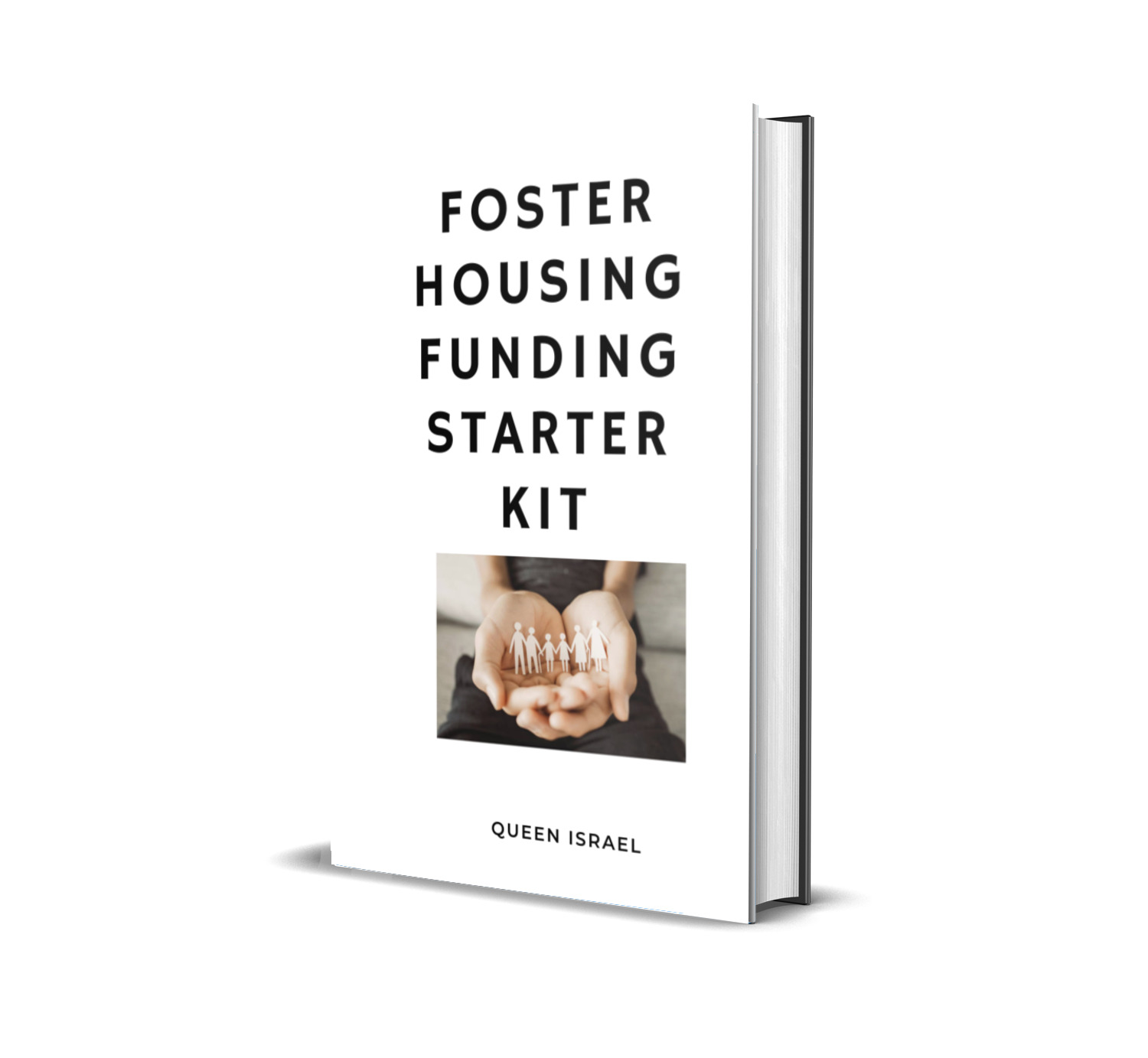If you’re a small business owner seeking to grow or overcome financial hurdles, a $5000 small business grant could be the key to unlocking your next level of success. Small businesses are the backbone of the economy, and getting access to funding is often one of the biggest challenges they face.
Luckily, small business grants like the $5000 grants are designed to provide financial support for entrepreneurs to achieve their goals, innovate, and thrive.
In this post, we’ll break down everything you need to know about securing a $5000 small business grant, the types of grants available, eligibility requirements, and practical steps to help you submit a successful application.
What is a $5000 Small Business Grant?
A $5000 small business grant is a financial award given to small businesses to help cover the costs of various business-related expenses.
These expenses can include marketing, product development, equipment purchase, business expansion, employee salaries, and more. Unlike loans, grants do not need to be repaid, making them an ideal source of funding for businesses that may not be able to take on additional debt.
The goal of small business grants is to support business growth, encourage innovation, and create more job opportunities. Many organizations, foundations, and government agencies offer these types of grants to promote economic development and help businesses thrive.
Why Pursue a $5000 Small Business Grant?
Securing a $5000 grant can provide a significant boost to your business in several ways:
- Financial Relief: Grants can help alleviate financial stress by covering essential expenses without the burden of repayment.
- Growth Opportunities: Use the funds to expand your product line, enter new markets, or hire additional staff.
- Innovation: Invest in research and development to create new products or improve existing ones.
- Marketing: Enhance your marketing efforts to reach a broader audience and increase sales.
- Credibility: Winning a grant can add credibility to your business, making it easier to attract additional funding or partnerships.
Types of $5000 Small Business Grants
There are many different types of small business grants, and they come in various forms. Let’s look at some of the most common ones:
1. Government Grants
Government grants are often the most sought-after funding sources. The U.S. government offers a variety of small business grants through agencies like the Small Business Administration (SBA) and the Department of Commerce. For example, the SBA’s competitive grant programs focus on helping small businesses involved in research and development, technology, and even agriculture.
Example: The Small Business Innovation Research (SBIR) program offers funding for small businesses engaged in high-tech research and development. The goal of this program is to promote technological innovation and commercialization in the U.S. economy.
Data Point: According to the SBA, in 2023, over 2,500 small businesses received SBIR grants totaling more than $200 million.
2. Corporate Grants
Many large companies offer grants as part of their Corporate Social Responsibility (CSR) initiatives. These grants are designed to support small businesses that align with the corporation’s values and goals. Some of the best-known corporate grant programs include those from companies like FedEx, Comcast, and Visa.
Example: FedEx offers the “Small Business Grant Contest,” where businesses can win up to $50,000 in grants and additional services such as shipping and marketing support.
Data Point: In 2022, FedEx awarded over $10 million in grants to small businesses across the United States.
3. Private Foundations
Numerous private foundations offer grants to support entrepreneurship, innovation, and small business growth. These foundations tend to focus on specific industries or social missions, such as women-owned businesses, minority-owned businesses, or businesses in underdeveloped areas.
Example: The Amber Grant Foundation offers $10,000 grants monthly to women entrepreneurs, with one lucky winner each year receiving a $25,000 bonus and a chance at a $100,000 grand prize.
Data Point: Since its inception, the Amber Grant Foundation has awarded over $1 million to women-owned businesses.
4. Nonprofit Grants
Nonprofits can also offer small business grants, especially if your business has a social impact mission. For example, if you’re a business that helps underserved communities or promotes sustainability, nonprofits may be willing to provide you with funding.
Example: The Ashoka Foundation provides grants to small businesses and social enterprises that focus on creating systemic social change.
Data Point: Ashoka has supported over 3,500 social entrepreneurs worldwide, many of whom have launched successful businesses with their grants.
5. Local Grants
Many local governments and community organizations offer grants to support small businesses within their regions. These grants often aim to boost local economies, create jobs, and support community development projects.
Example: The New York City Economic Development Corporation (NYCEDC) offers various grants to small businesses operating in New York City, focusing on sectors like technology, manufacturing, and creative industries.
Data Point: In 2023, NYCEDC awarded over $15 million in grants to local businesses.
Eligibility Criteria for $5000 Small Business Grants
Each grant will have specific eligibility criteria that you must meet to be considered. While the exact requirements will vary, here are some common eligibility factors you can expect:
- Business Size: Small businesses, typically those with fewer than 500 employees, are eligible for most small business grants. Some grants may also have revenue caps, meaning you need to be a business that hasn’t yet reached a certain income threshold.
- Industry or Niche: Some grants are specific to certain industries or sectors such as technology, healthcare, or agriculture. Others may be targeted to specific groups such as women, minorities, or veterans.
- Location: Some grants are specific to businesses in certain geographic areas, such as small businesses operating in underdeveloped communities or rural areas.
- Use of Funds: Grants are typically earmarked for specific purposes, so it’s important to understand what the grant is intended to support. It might be for equipment, product development, marketing, or business expansion.
- Business Stage: Some grants are designed for startups, while others are intended for established businesses looking to scale up.
How to Apply for a $5000 Small Business Grant
The process of applying for a $5000 small business grant can seem daunting, but breaking it down into smaller steps can help you stay organized and increase your chances of success.
1. Research Available Grants
Start by identifying the right grants for your business. Look for grants that align with your industry, business goals, and location. There are several platforms where you can find small business grant opportunities:
- Grants.gov (For U.S. federal grants)
- SBA.gov (For small business support)
- Foundation Center (For private foundation grants)
- Local Chamber of Commerce (For community-based grants)
Pro Tip: Set up alerts on these platforms to receive notifications about new grant opportunities that match your criteria.
2. Review Eligibility Requirements
Before you start writing your application, carefully read the eligibility criteria. Make sure your business meets all the requirements, including industry focus, size, and purpose of the funding. Missing eligibility requirements is one of the most common reasons applications are rejected.
Checklist:
- Confirm your business size and revenue meet the grant’s criteria.
- Ensure your business operates within the eligible geographic area.
- Verify that your business falls within the targeted industry or niche.
- Understand the specific use of funds required by the grant.
3. Prepare Your Business Plan
A solid business plan is often a requirement for grant applications. The plan should clearly outline your business model, goals, financial projections, and how the grant will help you achieve your objectives. This is your opportunity to demonstrate why your business is worthy of the funding and how you plan to use it to grow.
Components to Include:
- Executive Summary: A brief overview of your business and its mission.
- Company Description: Detailed information about your business, products, or services.
- Market Analysis: Insights into your industry, target market, and competitors.
- Organization and Management: Your business’s organizational structure and key team members.
- Service or Product Line: Details about what you sell or the services you offer.
- Marketing and Sales Strategy: How you plan to attract and retain customers.
- Funding Request: Specifics on how much funding you need and how it will be used.
- Financial Projections: Revenue and expense forecasts for the next few years.
Resource: Use LivePlan or Bplans to create a professional business plan.
4. Gather Supporting Documents
Grant applications often require specific documentation, including:
- Proof of Business Registration: Your business license or incorporation documents.
- Financial Statements: Recent balance sheets, income statements, and cash flow statements.
- Tax Returns: Personal and business tax returns for the past few years.
- Business Licenses: Any relevant licenses or permits required for your industry.
- Information on Your Team or Key Stakeholders: Resumes or biographies of key team members.
Tip: Organize these documents in a digital folder to streamline the application process.
5. Write a Compelling Proposal
A well-written proposal is crucial. In your proposal, be clear and concise about:
- The Purpose of the Grant: Explain why you need the funds and what you plan to achieve.
- How the Funds Will Be Used: Provide a detailed breakdown of how you will allocate the grant money.
- The Impact the Grant Will Have on Your Business: Describe the positive changes the grant will enable.
- Your Qualifications: Highlight your business’s strengths and why you’re a good fit for the grant.
Structure Your Proposal:
- Introduction: Introduce your business and its mission.
- Problem Statement: Explain the challenge or opportunity your business is addressing.
- Objectives: Outline what you aim to achieve with the grant funds.
- Methodology: Describe how you will implement your plans.
- Budget: Provide a detailed budget showing how the grant money will be spent.
- Conclusion: Summarize your proposal and reinforce your commitment to achieving your goals.
Pro Tip: Use clear headings, bullet points, and concise language to make your proposal easy to read.
6. Submit Your Application
Once you’ve prepared your application and supporting documents, double-check everything for accuracy before submitting. Make sure to submit by the deadline and keep a copy of your submission for your records.
Checklist Before Submission:
- Verify all required documents are included.
- Ensure your proposal addresses all the grant criteria.
- Proofread your application for spelling and grammatical errors.
- Confirm that you have met the submission guidelines (format, length, etc.).
Resource: Use tools like Grammarly to polish your application.
Tips for a Successful Grant Application
To improve your chances of winning a $5000 small business grant, keep these tips in mind:
- Be Clear About How You’ll Use the Funds: Funders want to know exactly how their money will be spent. Provide a detailed breakdown of your costs and demonstrate how each expense aligns with your business growth.
- Highlight Your Impact: Many small business grants focus on businesses that create jobs, foster innovation, or have a positive social impact. Emphasize how your business contributes to the community and economy.
- Tailor Your Application: Don’t use a one-size-fits-all approach. Tailor each application to the specific grant and its requirements. Show the funder that you understand their mission and how your business fits within it.
- Seek Professional Help: If you’re unsure about your application, consider consulting a grant writing expert. At Grant Writing Academy, we provide templates, tips, and tools that can help you submit a winning application.
- Provide Evidence of Success: Include data and metrics that demonstrate your business’s performance and potential. This could include sales figures, customer growth, or successful projects.
- Show Passion and Commitment: Let your enthusiasm for your business shine through. Funders want to support passionate and committed entrepreneurs who are dedicated to making their business succeed.
Common Mistakes to Avoid
Avoid these common pitfalls to increase your chances of securing a grant:
- Incomplete Applications: Missing required information or documents can lead to immediate disqualification. Always double-check your application before submitting.
- Ignoring Guidelines: Each grant has specific guidelines. Failing to follow them can result in your application being overlooked.
- Lack of Clarity: Be clear and concise in your proposal. Avoid jargon and ensure that your objectives and plans are easily understandable.
- Overlooking Deadlines: Submitting your application late can cost you the opportunity. Set reminders to ensure you meet all deadlines.
- Not Demonstrating Impact: Failing to show how the grant will positively impact your business and community can weaken your application.
- Poor Presentation: A messy or unprofessional application can create a negative impression. Ensure your application is well-organized and visually appealing.
Success Stories: Real-Life Examples of $5000 Grant Winners
Learning from others who have successfully secured grants can provide valuable insights and inspiration.
Case Study 1: Jane’s Organic Bakery
Background: Jane started her organic bakery two years ago, focusing on healthy and sustainable baked goods. She needed funds to expand her production capacity and invest in new equipment.
Grant Applied For: The Amber Grant for Women Entrepreneurs
Application Highlights:
- Detailed business plan outlining expansion plans.
- Clear explanation of how the grant would be used to purchase new baking equipment and hire additional staff.
- Emphasis on the bakery’s commitment to sustainability and community health.
Outcome: Jane received a $5,000 grant, which allowed her to double her production capacity and increase her customer base by 50%.
Case Study 2: Tech Innovators LLC
Background: Tech Innovators LLC is a startup developing innovative software solutions for small businesses. They sought funding to complete their product development and launch a marketing campaign.
Grant Applied For: SBIR Phase I Grant
Application Highlights:
- Comprehensive research and development plan.
- Detailed budget showing allocation of funds for product development and marketing.
- Strong evidence of market need and potential for commercialization.
Outcome: Tech Innovators secured a $5,000 grant, enabling them to finalize their software product and successfully launch their marketing campaign, resulting in a 30% increase in sales within six months.
Frequently Asked Questions (FAQ)
1. What is the difference between a grant and a loan?
A grant is a sum of money given to a business that does not need to be repaid, whereas a loan is borrowed money that must be repaid with interest. Grants are typically awarded based on need, merit, or specific criteria set by the grantor.
2. Can any small business apply for a $5000 grant?
Not all small businesses are eligible for every grant. Eligibility depends on factors like business size, industry, location, and the specific requirements of the grant. It’s important to research and find grants that align with your business profile.
3. How long does it take to receive grant funds?
The timeline varies depending on the grantor. Some grants may disburse funds within a few weeks, while others might take several months. Always check the grant’s timeline and plan accordingly.
4. Can I apply for multiple grants at the same time?
Yes, you can apply for multiple grants simultaneously. However, ensure that each application is tailored to the specific grant and that you can manage the reporting and compliance requirements if you receive multiple awards.
5. What should I do if my grant application is rejected?
If your application is rejected, seek feedback from the grantor to understand why. Use this information to improve future applications. Additionally, continue researching and applying for other grant opportunities.
Resources and Tools
To further assist you in securing a $5000 small business grant, here are some valuable resources and tools:
- Grant Writing Academy: Subscribe to our newsletter to access tips, strategies, templates, and tools designed to enhance your grant writing skills and increase your success rates.
- Grants.gov: The official government website for finding and applying for federal grants.
- SBA Grant Programs: Explore grant opportunities specifically for small businesses.
- Foundation Directory Online: A comprehensive database of private foundations and grantmakers.
- Canva: Use Canva to create professional and visually appealing grant application materials.
- Trello: Organize your grant application process with Trello’s project management tools.
Final Thoughts
Securing a $5000 small business grant could be the funding boost you need to take your business to new heights. By researching available grants, preparing a solid application, and using proven strategies, you can improve your chances of success.
Remember, persistence is key. Even if you face rejections initially, each application is an opportunity to refine your approach and strengthen your business plan.
If you’re ready to take your small business to the next level, consider subscribing to the Grant Writing Academy Newsletter. You’ll gain access to tips, strategies, templates, and tools designed to help you navigate the grant writing process and increase your chances of winning funding.
Don’t wait—your business’s future could be one grant away!
Additional Resources and Support
a) Expand Your Knowledge
The grant writing field is always evolving. Keep learning and improving your skills to stay competitive.
Recommended Resources:
- Request for Proposal Success: How to Write Proposals That Win: Learn the techniques and strategies to create standout proposals.
- Tech Startup Funding Secrets: Navigating Grants for Maximum Growth: Perfect for those in the tech sector looking to leverage grants for scaling.
- Grant Proposal Guide for Environmental Projects: Tailored for environmental initiatives seeking to secure impactful funding.
- The Ultimate Guide to Federal Grant Applications: Techniques for Success: Master the complexities of federal grants with actionable insights.
Explore More Books Here
b) Invest in Expert Guidance
Want to fast-track your growth and achieve even more success?
Join one of our mentorship programs for tailored advice and support:
Mentorship Programs:
- 3-Month Mentorship: The Foundation Builder: A short-term plan to refine your grant writing skills and win your first (or next) grant.
- 6-Month Mentorship: The Proposal Pro: Dive deeper into strategies, proposal reviews, and funding plans.
- 1-Year Mentorship: The Funding Champion: Build long-term success with comprehensive guidance, unlimited reviews, and exclusive resources.
C) Book a One-on-One Consultation
Sometimes you just need personalized advice to tackle challenges or fine-tune your strategy. Let’s work together to solve your unique grant writing challenges.






